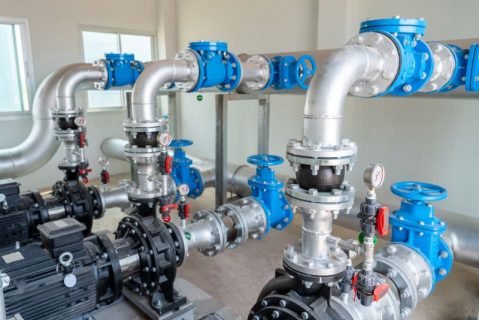Modern buildings, ranging from residential complexes to commercial skyscrapers and industrial facilities, require sophisticated management systems to maintain their operations efficiently and sustainably. Some key components of these systems are pumps and valves, which play pivotal roles in controlling the flow rate of fluids and gases throughout a building. These components are essential for heating and cooling systems, water supply, waste management, and fire protection systems.
Continue reading this article to learn the role of pumps and valves in efficient building management.
Understanding The Importance Of Pumps And Valves
Pumps and valves are fundamental to efficiently operating and managing various systems within buildings. Pumps, driven typically by electric motors, are designed to move fluids—whether liquids or gases—through mechanical action. These devices are versatile and find applications in multiple aspects of building infrastructure. For example, pumps like a hydraulic pump can facilitate water circulation within plumbing systems, transfer heat in heating and cooling systems, and ensure the proper movement and disposal of sewage.
Similarly, valves play a critical role in regulating these systems. They function by opening, closing, or partially obstructing fluid flow pathways. This ability to control flow makes valves essential for managing system pressures and directing fluids efficiently throughout a building. They are crucial in maintaining the operational integrity and safety of systems like plumbing and heating by preventing backflow, allowing isolation for maintenance, and managing pressure surges.
On the other hand, some key applications of pumps and valves in building management include:
- HVAC Systems: They’re used to circulate cool or heated water and refrigerants to maintain optimal indoor temperatures.
- Fire Suppression Systems: They’re used to deliver water efficiently in a fire.
- Waste Management: They’re used to transport sewage and waste fluids to treatment facilities.
- Irrigation Systems: They’re used to manage water flow rate for landscaping and agricultural applications in large complexes.
Therefore, for professionals looking to source high-quality pumps and valves that can be used for various applications in building management, it’s best to consult reputable providers like Asco for a range of solutions. They’re designed to meet the rigorous demands of modern building management systems, ensuring reliability and efficiency.

Roles Of Pumps And Valves In Efficient Building Management
After understanding the importance of pumps and valves, the next step is knowing the various roles of these devices in efficient building management. These may include:
Enhanced Efficiency Through Smart Control Systems
Integrating smart control systems has significantly boosted the efficiency of pumps and valves in building management. These systems use sensors and automated controls to adjust the operations of pumps and valves based on real-time data. For instance, in a heating, ventilation, and air conditioning (HVAC) system, smart pumps can adjust their speed based on the temperature needs of different building zones, thereby reducing energy consumption and enhancing occupant comfort.
Effective Water Management
Efficient water management is critical in any building to ensure a sustainable operation. Pumps and valves control the entire water cycle — from supply and distribution to waste management. Advanced water pumps like a hydraulic pump are used to distribute water to various parts of a building and support everything from simple plumbing to complex industrial processes. On the other hand, flow control valves play a crucial role in managing water pressure and flow, preventing leaks and reducing wastage.
Energy Savings And Sustainability
Energy efficiency is a major focus in building management, with pumps and valves at the forefront of this initiative. By optimizing the operation of these components, buildings can significantly reduce their energy consumption. Variable frequency drives (VFDs) are often used with pumps to adjust their speed based on demand, thus conserving energy. Similarly, thermostatic valves in heating and cooling systems can reduce the energy used by regulating temperatures according to predefined settings.
Safety And Compliance
Safety is paramount in building management, and pumps and valves contribute significantly to maintaining a safe environment. For instance, fire suppression systems rely heavily on pumps to maintain pressure and control valves to direct water flow during emergencies. Ensuring these components function correctly is crucial for compliance with safety standards and regulations.
Challenges And Solutions
Despite their indispensable role, managing pumps and valves in buildings comes with several challenges. These include wear and tear from constant use, which requires regular maintenance; compatibility issues, where new technology must integrate seamlessly with existing infrastructure; and the substantial initial installation cost. Overcoming these challenges requires thoughtful planning and investment.
However, installing high-quality and correctly sized pumps and valves significantly enhances building efficiency and sustainability in the long run. This strategic investment optimizes operational performance and saves considerable cost over time through reduced energy consumption and maintenance needs.
Conclusion
With the information mentioned above in mind, pumps and valves are indispensable in modern building management systems. They play critical roles in maintaining the functionality and safety of buildings while promoting energy efficiency and sustainability. As technology evolves, the potential for smarter, more efficient building management systems grows, highlighting the importance of these essential components in daily operations. By continuing to innovate and upgrade these systems, building management can achieve new levels of efficiency and effectiveness.

